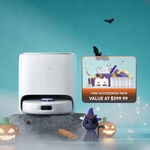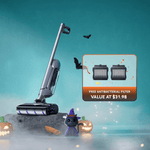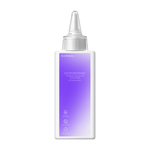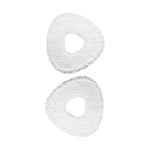Cleaning different surfaces in your home can be frustrating—especially when pet hair clings to fabric, dust collects in corners, or your vacuum just doesn’t seem to reach. The solution? Using the right vacuum attachments for the task.
In this guide, you'll learn about 13 common vacuum tools and what each one does best—from turbo brushes to dusting heads and crevice tools. You'll also discover how to choose the right attachments based on your floor types, cleaning routines, and household needs like pets or allergies. Proper maintenance matters too, so we’ll walk through how to clean and replace worn-out tools to keep your vacuum running efficiently.
If you're in Australia, we’ve included tips tailored to local conditions—like timber floors, dusty corners, and heavy-shedding pets. Finally, you’ll get a quick summary of key takeaways to help you clean smarter with less effort.
Whether you vacuum daily or do a deep clean once a week, the right attachments can make all the difference.
13 Common Vacuum Attachments and What They’re Best For
Vacuum attachments are designed for specific cleaning jobs, from removing pet hair to reaching narrow gaps. In this section, you'll discover 13 common types of attachments, what they look like, how they connect to your vacuum, and where they work best in your home.

Airflow Brush
The airflow brush is a compact tool, usually rectangular or oval in shape, with a small, angled suction opening. It attaches to the vacuum's hose or wand. This brush is designed to concentrate airflow into a narrow path, making it easier to remove dust and crumbs from tight spots like between car seats, sofa cushions, or corners of stairs. To use it, connect it to the hose, then glide it slowly over fabric or confined surfaces for gentle but focused suction.
Dust Brush
This round attachment has soft bristles circling its opening. It connects to the vacuum wand and is typically used with low suction. The bristles loosen dust from delicate items like lampshades, blinds, and picture frames, while the vacuum gently pulls it away. It’s ideal for electronics, decorative objects, or anything that can scratch easily. Simply sweep the brush over the surface in light, circular motions.
Floor Brush
This is a wide, flat brush head with soft bristles on the underside. It replaces the standard vacuum head and is designed for use on hard surfaces like wood, tile, or laminate. The bristles sweep while suction pulls in debris. You attach it to the wand or hose, then push it gently across the floor. It’s built to avoid scratching, especially on delicate finishes.
Upholstery Brush
This tool is usually rectangular and wider than it is tall, with short rows of stiff bristles or felt strips. It connects to the vacuum hose and is used for cleaning fabric-covered furniture, such as couches, mattresses, and chairs. Drag it firmly over surfaces to lift embedded pet hair, lint, and dust. It’s especially helpful on textured or woven fabrics.
Turbo Brush
The turbo brush has a rotating cylindrical brush inside a clear or covered casing. It attaches to the vacuum’s wand or hose and is powered by airflow or a motor. As suction pulls in air, the brush spins to agitate carpet fibers and lift deep dirt. It’s best used on carpets or rugs in high-traffic areas. Move it slowly across the surface to let the bristles work through the pile.
Auto Detangling Side Brush
This small, round brush is fixed on the side of some vacuum heads, especially robot or upright models. It rotates outward to sweep debris toward the vacuum’s main intake. What makes it unique is its built-in detangling feature, which prevents long hair or pet fur from wrapping around the bristles. Auto auto-detangling side brush automatically adjusts as it spins and requires no maintenance. It’s built-in and works as part of the main cleaning head.
|
Attachment Type |
Key Feature |
Best Use Case |
|
Airflow Brush |
No bristles; focused suction | Tight spots like stairs, sofa seams, cars |
|
Dust Brush |
Soft bristles; gentle dusting | Lampshades, electronics, blinds |
|
Floor Brush |
Wide, soft bristles | Hard floors (wood, tile, laminate) |
|
Upholstery Brush |
Firm bristles or felt strips | Couches, mattresses, fabric furniture |
|
Turbo Brush |
Rotating bristle brush (air/motor powered) | Deep-cleaning carpets and rugs |
|
Auto Detangling Side Brush |
Built-in rotating edge brush with detangling | Robot vacuums; edges, corners |
Crevice Tool
The crevice tool is long, flat, and tapers to a narrow, angled tip—usually 20–30 cm in length. It connects directly to the vacuum hose or wand. Its slim design allows you to reach into deep, narrow gaps, like between the wall and refrigerator, along baseboards, or inside window tracks. Hold the tool firmly and run it along tight seams to remove dust and hidden debris.
Extension Wand
The extension wand is a rigid, tube-shaped attachment, usually made of lightweight plastic or metal. It connects between the hose and any other tool or head. Its purpose is to extend your reach vertically or horizontally. Use it to clean ceiling corners, fan blades, curtain rods, or under furniture. You can also connect two wands for extra height.
Base Station Dust Bags
Base station dust bags are sealed, disposable dust bags that fit inside the docking base of an automatic or robot vacuum. They’re boxy in shape and can hold up to 2.5 liters of dirt. Once the vacuum docks, it empties its internal bin into the dust bag, which keeps dust sealed away and reduces odors. You remove and replace the bag every few weeks by opening the docking station lid.
Washable Carpet Tape
Washable carpet tape is a narrow strip, often made of silicone or rubber, that attaches near the edge of your vacuum head or nozzle. It's flexible and textured, designed to scrub the edges of carpets, especially along walls and in corners where standard brushes miss. It can be rinsed and reused after each session. Press it firmly into carpet edges and run it slowly to loosen stuck-in dirt.
Threshold Modules
These are small, flat accessories located on the underside of some robotic or upright vacuums. They help the vacuum transition smoothly over thresholds, like from tile to carpet or over door frames. Threshold modules don’t require user operation, but ensure the vacuum doesn’t get stuck or lose suction on uneven flooring.
Replaceable Insert Bin
A replaceable insert bin is the removable dirt container built into bagless vacuums or robot vacuums. It's usually a plastic box or tray with a handle, located behind a door or under a lid. When full, you pull it out, empty it, or replace it with a new bin liner. It allows hygienic disposal without direct contact with dust.
HEPA Filter
The HEPA filter is a rectangular or circular cartridge placed inside the vacuum body, often near the air exhaust. It’s made of tightly woven fibers that trap allergens like pollen, pet dander, and fine dust. The filter helps clean the air before it's released back into your home. Depending on the model, it should be replaced or rinsed regularly.
How to Choose the Right Vacuum Attachments for Your Cleaning Needs
Choosing the right vacuum attachment depends on your home, your cleaning habits, and the surfaces you deal with. Below are common household scenarios with the best attachment types for each.
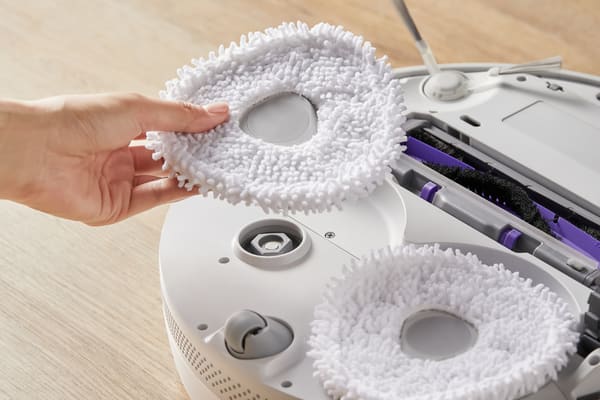
Homes with Pets
Pet hair can cling to fabric and corners. Choose tools that are strong, easy to clean, and effective on soft surfaces.
Recommended Tools:
- Upholstery Brush – Lifts pet hair from couches and cushions
- Turbo Brush – Deep cleans rugs and carpets with embedded fur
- Crevice Tool – Reaches where hair clumps, like along baseboards
For Allergy Control
Dust and allergens need to be contained, not just moved around. Look for attachments with sealed airflow and soft agitation.
Recommended Tools:
- Dust Brush – Gently removes fine dust from delicate surfaces
- HEPA Filter – Prevents allergen particles from re-entering the air
- Crevice Tool – Clears vents, corners, and window tracks with precision
Hard Floors vs. Carpets
Different surfaces call for different attachments. Hard floors need gentle contact; carpets require deeper agitation.
|
Surface Type |
Best Attachments |
Notes |
| Hard Floors | Floor Brush, Dust Brush | Use soft bristles to avoid scratches |
| Low-Pile Carpet | Turbo Brush, Upholstery Brush | For light dirt or pet hair |
| High-Pile Carpet | Turbo Brush, Crevice Tool | Use motorized heads for deeper clean |
Special Cleaning Tasks
Some areas are harder to reach—like ceilings, curtain rods, or tight corners. Flexible and slim attachments make these jobs easier.
Recommended Tools:
- Extension Wand – Adds vertical or horizontal reach
- Crevice Tool – Cleans narrow gaps and sliding door tracks
- Dust Brush – Removes cobwebs or dust without damage
Match Tools to Cleaning Frequency
Using the right tool at the right time improves cleaning efficiency.
|
Cleaning Frequency |
Recommended Approach |
| Daily Cleaning | Lightweight tools; easy to attach or switch |
| Weekly Cleaning | More powerful attachments; deeper clean |
| Seasonal Deep Clean | Use full range of tools; replace filters & inspect brushes |
Tips:
- Quick-release mechanisms make daily swaps faster
- Motorized brushes are heavier but offer deeper performance
- Choose tools that are easy to clean and store, especially for frequent use
Vacuum Attachment Maintenance: How to Clean and Replace Tools
Proper maintenance keeps your vacuum tools working efficiently and helps extend their lifespan. This section covers how to clean attachments and when to replace them.

How to Clean Vacuum Attachments
After each use, check your attachments for visible debris. Remove tangled hair from brushes and any build-up in rotating parts. For washable tools like turbo brushes and upholstery heads, rinse with warm water and mild detergent. Avoid soaking any motorized parts.
Let all parts dry completely before reattaching to prevent mold or odor. Once a month, inspect for signs of wear—such as bent bristles, cracks in connectors, or air leaks in seals. Regular cleaning improves airflow and suction power.
When to Replace Vacuum Tools
Even with proper care, attachments wear out over time. If a brush no longer makes full contact with the surface, or filters release dust when tapped, it’s time to replace them.
Here’s a general maintenance guide:
|
Component |
Replacement Frequency |
| Brushes (Turbo/Upholstery) | Every 6–12 months |
| HEPA Filters | Every 6 months |
| Dust Bags | When full or every 90–120 days |
Timely replacement ensures your vacuum performs at full strength and keeps your home clean and allergen-free.
Do These Vacuum Attachments Work Well for Australian Homes?
Yes, most vacuum attachments work just as well in Australian homes, but local conditions do influence which tools are most useful.
For example, many homes in Australia have timber or tile floors, which pair best with soft-bristled floor brushes to avoid scratches. In dust-prone regions like Queensland, crevice tools and dust brushes help keep window tracks and corners clean. And if you have pets — especially common breeds like Labradors or border collies — turbo brushes and upholstery tools are essential for managing heavy shedding.
Choosing attachments that match your home's flooring, climate, and cleaning needs ensures better results with less effort.
Final Tips: Use the Right Tools for Better Cleaning Results
Now you know what vacuum attachments do, how to choose the right ones, and how to keep them working properly. Using the correct attachment for each surface or task makes cleaning faster, easier, and more effective.
Keep your attachments clean and inspect them regularly. Replace them when they wear out to maintain strong suction and consistent performance.
If you're just getting started, Narwal offers a range of robot vacuum attachments designed to match different home needs. Choosing tools that suit your space and routine can make a big difference in your daily cleaning.



































